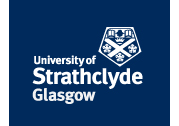Employment and Unemployment
| % economically active population | |||
| Region | Employed | Unemployed | % Mean Employed |
| Central Black Earth | 93 | 7 | 102 |
| West Siberia | 92 | 8 | 101 |
| Urals | 92 | 8 | 101 |
| Central | 92 | 8 | 101 |
| Volga | 91 | 9 | 100 |
| Volgo-Vyatka | 91 | 9 | 100 |
| RUSSIAN MEAN | 91 | 9 | 100 |
| East Siberia | 90 | 10 | 99 |
| North-west | 90 | 10 | 99 |
| Far East | 89 | 11 | 98 |
| Northern | 89 | 11 | 98 |
| North Caucasus | 88 | 12 | 97 |
| Source: Rossijskij Statisticheskij Ezhegodnik [Russian Statistical Yearbook], 1996. |
The move to the market has created two types of difficulties for employees: a person may lose their job and become unemployed, or a person may not be paid even though nominally remaining an employee. Those who are unpaid but nominally employed are more numerous than those formally registered as unemployed (compare wages delayed).
The figures above reflect total unemployment as estimated by the State Statistical Committee on the basis of an annual sample survey according to International Labour Organization criteria. These official estimates, which detect some but not all hidden unemployment, show Russian unemployment at 9 per cent nationwide in 1995. The number of people officially registered as unemployed by the state employment service is around three times lower.
The regional variations around the mean are limited by comparison with variations in some advanced industrial societies, such as Britain, the re-unified Germany or the United States. The war-torn North Caucasus and the Northern and Far East regions report the highest unemployment, and the Central Black Earth region the lowest. But these figures also mean that in every region of Russia at least 88 per cent in the official labour force are deemed to be employed.
In the labour force as a whole, 19 per cent report that they have a second job as an additional source of income and a majority of households also supplement their resources with unpaid do-it-yourself work, such as growing some of their own food.


